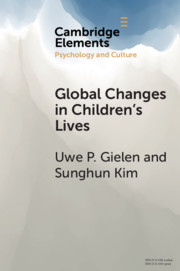Element contents
Global Changes in Children's Lives
Published online by Cambridge University Press: 20 December 2018
Summary
- Type
- Element
- Information
- Online ISBN: 9781108594011Publisher: Cambridge University PressPrint publication: 20 December 2018
References
- 14
- Cited by



